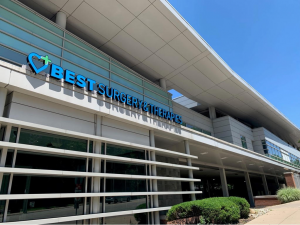Upper Limb Fractures
The upper limbs include hands, wrists, elbows, and arms, which are common locations for fractures and/or broken bones. The daily tasks we perform with our arms, such as lifting and high-velocity movement, often expose them to forces that can cause fractures. In addition to trauma, fractures can also develop as a result of repetitive motion stress.
Upper limb pain related to a potential fracture should never be ignored. Delayed diagnosis and treatment significantly increase the risk of improper healing and cause symptoms to worsen. Even though hand, wrist, and arm pain can negatively affect your quality of life, there are a number of effective treatments that can help manage symptoms and promote healing.
Causes
The upper limbs consist of a large number of bones, particularly the wrists and hands, which are made of twenty-seven bones each. There are three bones that make up the arm: the humerus (upper arm), the radius, and ulna in the forearm. Any of these bones can develop a fracture depending on the nature of the trauma. Common upper limb fractures include:
- Direct trauma by an object
- Motor vehicle collision
- Falls
- Contact sports
- Repetitive stress
- Severe twisting
Fractures become more likely with age due to natural degradation and related conditions.
Treatment
The first step to ensure the broken upper limb heals properly is to make sure it is set correctly. In the case of a broken arm or wrist, a sling or cast is often required to limit movement. Similarly, a splint, brace, or cast may be used for the hand depending on the nature and extent of the injury. Keeping the fracture immobilized will allow the break to heal properly which is imperative to make sure the injury does not worsen.
To manage symptoms as the fracture heals, over-the-counter medication and cold compression may be used as needed. Fractures can be expected to heal within six weeks but can vary from case to case. After any cast or splint is removed, the patient must undergo physical therapy to rebuild strength and mobility. Physical therapy techniques include therapeutic exercise and manual therapies performed by a therapist.
Symptoms
Fractures due to a fall, collision, or other trauma usually result in severe pain immediately after. In some cases, fractures can be visible but it is possible for less severe fractures to be mistaken for other injuries. Because of this, any serious injury must receive prompt professional attention.
The most common symptoms for upper limb fractures include:
- Sharp pain
- Visible bruising
- Swelling
- Highly limited range of motion
- Grinding, cracking, or popping sensations
- A prominence or bump at the point of fracture
Diagnosing Fractures
Fractures are typically diagnosed with an X-ray, making the fracture highly visible due to the X-ray radiation responding to the calcium in bones. A diagnosing physician should also perform the following:
- Review medical/treatment history
- Perform a visual examination
- Careful hands-on evaluation of the upper limb
Treatment for the fracture may vary depending on the location and severity of the fracture.
Surgical Procedures
If the fracture is severe enough, surgery may become necessary as a last resort. A severely broken arm, wrist, or hand may require surgery involving rods and screws to hold the bones in place as they heal. Some of these procedures can be performed on an outpatient basis due to the development of minimally invasive techniques.
BEST Health System Treatment Options
To learn more about our treatment options for a wide range of upper limb conditions, including fractures, reach out to our caring team. Our highly skilled doctors, surgeons, and treatment professionals have decades of combined experience in helping patients find relief from pain and mobility problems so they can return to the people and activities they’ve been missing.
If you have experienced any of these symptoms or recieved a diagnosis and need treatment, BEST can help. Take the first step towards relief today.
Related Articles
A Map of BEST Health System's Ohio Locations
BEST – The Health System Redefining Care Throughout Ohio BEST Health System is a modern healthcare system with accessible locations throughout the state of Ohio. […]
A Checklist for Car Accident Survivors
The Risk of Driving In the case of a car accident, it only takes a few seconds for everything to change. It has been estimated […]
Osteoarthritis and Spinal Stenosis
What is Osteoarthritis? Osteoarthritis is one of the most common causes of spinal stenosis, according to the American College of Rheumatology. Further research shows that […]
Five Treatment Options to Help with any Type of Tendonitis
Tendonitis, also spelled tendinitis, is an injury caused by inflammation and damage to tendons. In the body, tendons are tough flexible pieces of cartilage that […]
Six Steps to Diagnose a Ganglion Cyst | BEST
A ganglion cyst is a type of noncancerous lump that develops on the back of the hand. This is the most common form of lump […]



